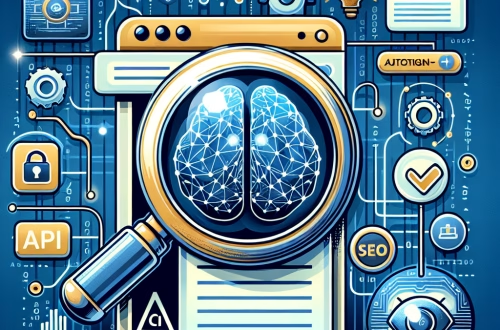Summary:
This article compares the conversational flow of Google’s Gemini 2.5 Flash and Meta’s Llama AI models, focusing on their strengths, weaknesses, and ideal use cases. Gemini 2.5 Flash excels in speed and efficiency for real-time interactions, while Meta Llama offers deeper contextual understanding for complex dialogues. Understanding these differences helps businesses and developers choose the right model for chatbots, virtual assistants, and customer support applications. Both models represent cutting-edge AI advancements, but their performance varies significantly depending on conversational needs.
What This Means for You:
- Choosing the Right AI for Your Needs: If you prioritize fast, lightweight interactions (e.g., customer service bots), Gemini 2.5 Flash is ideal. For nuanced, context-heavy conversations (e.g., therapy bots), Meta Llama may perform better.
- Optimizing Response Quality: Test both models with your specific use case—Gemini 2.5 Flash for quick replies, Llama for detailed explanations. Use A/B testing to determine which delivers better user engagement.
- Cost and Scalability Considerations: Gemini 2.5 Flash is optimized for low-latency, high-volume deployments, while Llama requires more computational resources. Evaluate infrastructure costs before committing.
- Future Outlook or Warning: As both models evolve, expect tighter competition in conversational AI. However, reliance on a single model without benchmarking alternatives could lead to suboptimal performance as new updates roll out.
Gemini 2.5 Flash vs Meta Llama: Which AI Delivers Smoother Conversations?
Introduction to Conversational AI Models
Conversational AI has rapidly advanced with models like Google’s Gemini 2.5 Flash and Meta’s Llama pushing boundaries in natural language processing (NLP). While both aim to simulate human-like dialogue, their architectures, training data, and optimization goals differ significantly. This article breaks down their conversational flow, strengths, and limitations to help novices understand which model suits their needs.
Gemini 2.5 Flash: Speed and Efficiency
Gemini 2.5 Flash is designed for high-speed, low-latency interactions. Its lightweight architecture enables rapid responses, making it ideal for real-time applications like chatbots and voice assistants. Key strengths include:
- Low-Latency Responses: Processes queries in milliseconds, crucial for live customer support.
- Scalability: Handles high-volume traffic efficiently, reducing server costs.
- Optimized for Short Conversations: Excels in brief exchanges but may struggle with multi-turn context retention.
However, its streamlined design means it sometimes sacrifices depth for speed, leading to generic replies in complex scenarios.
Meta Llama: Depth and Contextual Understanding
Meta Llama, trained on extensive datasets, specializes in contextual coherence and long-form dialogue. Its key advantages include:
- Multi-Turn Context Retention: Remembers user inputs across longer conversations, ideal for technical support or tutoring.
- Nuanced Responses: Generates detailed, human-like answers by leveraging deeper NLP frameworks.
- Open-Source Flexibility: Allows customization for niche applications, unlike Gemini’s proprietary system.
On the downside, Llama’s computational demands can slow response times, and its open-source nature requires more technical expertise to deploy effectively.
Best Use Cases for Each Model
Gemini 2.5 Flash shines in:
- High-speed customer service bots
- Voice-enabled devices (e.g., smart speakers)
- Large-scale deployments where cost and speed matter
Meta Llama is better suited for:
- Complex problem-solving (e.g., coding assistants)
- Long-form educational or therapeutic chatbots
- Scenarios requiring adaptive, personalized responses
Limitations and Trade-offs
Neither model is universally superior. Gemini 2.5 Flash can feel robotic in extended talks, while Llama may lag in time-sensitive applications. Developers must weigh trade-offs between speed, cost, and conversational depth.
People Also Ask About:
- Which model is better for small businesses? Gemini 2.5 Flash is often more accessible due to its integration with Google’s ecosystem and lower computational overhead. Small businesses needing quick, affordable chatbot solutions should start here.
- Can Meta Llama handle multilingual conversations? Yes, Llama’s training includes diverse languages, but performance varies by dialect. For global applications, fine-tuning may be necessary.
- Is Gemini 2.5 Flash suitable for emotional support chatbots? Not ideal—its brevity can lack empathy. Llama’s nuanced responses better simulate emotional intelligence.
- How do I test these models before committing? Use Google’s AI Studio for Gemini and Llama’s Hugging Face integration for prototyping. Compare metrics like response time and user satisfaction.
Expert Opinion:
The race between proprietary and open-source conversational AI will intensify, with Gemini leading in commercial scalability and Llama in research customization. Users should prioritize transparency in training data, as biases can emerge in both models. Future iterations will likely blend speed and depth, but for now, selecting the right tool depends on specific use-case requirements.
Extra Information:
- Google’s Gemini Documentation – Official details on architecture and API integration for developers.
- Meta Llama Research – Technical papers and deployment guides for open-source implementation.
Related Key Terms:
- Gemini 2.5 Flash conversational AI speed optimization
- Meta Llama vs Google Gemini for chatbots
- Low-latency AI dialogue systems
- Best conversational AI for customer support 2024
- Open-source vs proprietary NLP models
Check out our AI Model Comparison Tool here: AI Model Comparison Tool
#Gemini #Flash #Meta #Llama #Delivers #Smoother #Conversations
*Featured image provided by Pixabay





